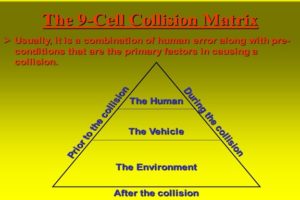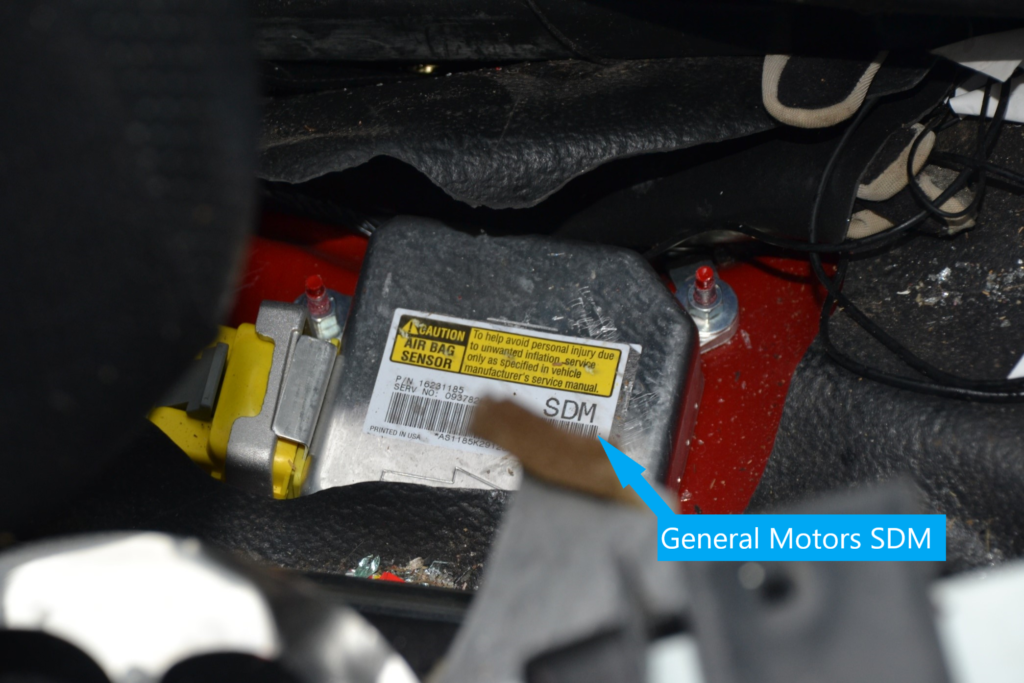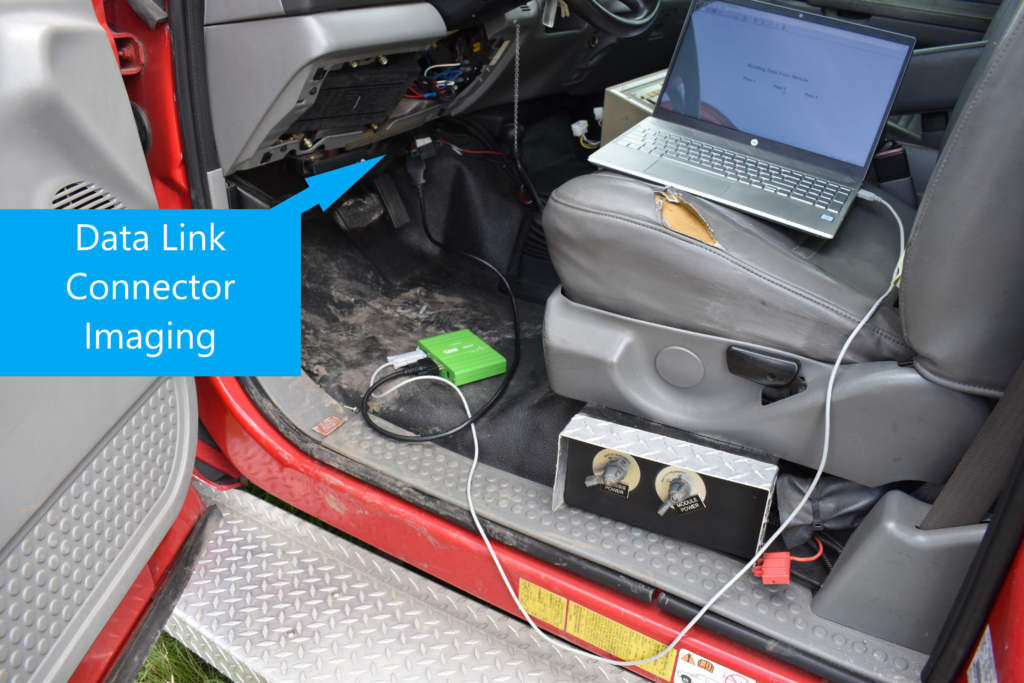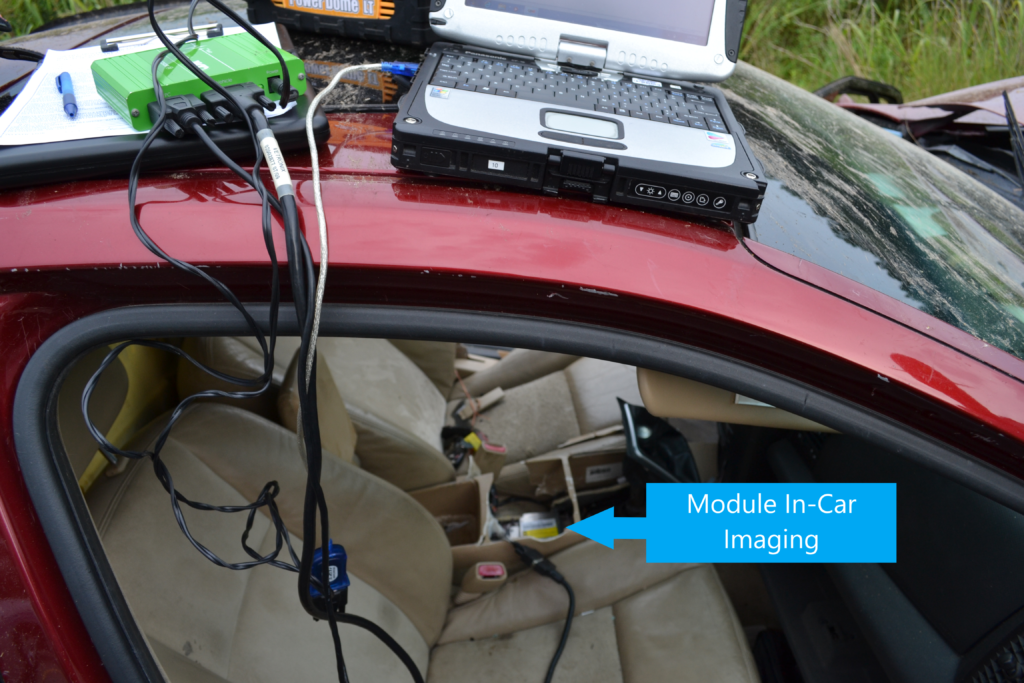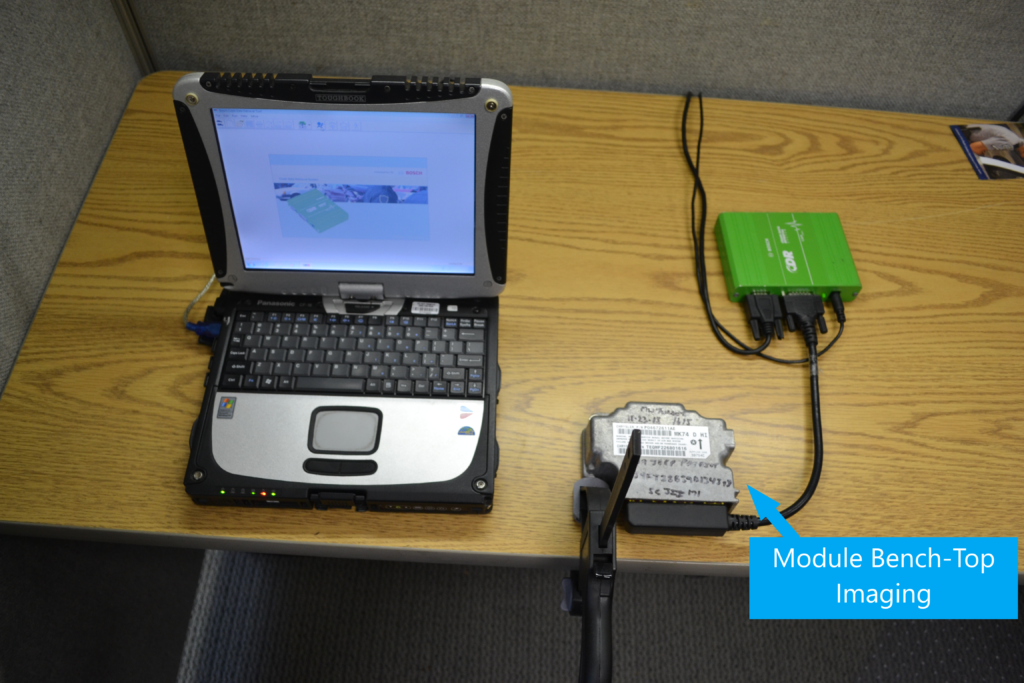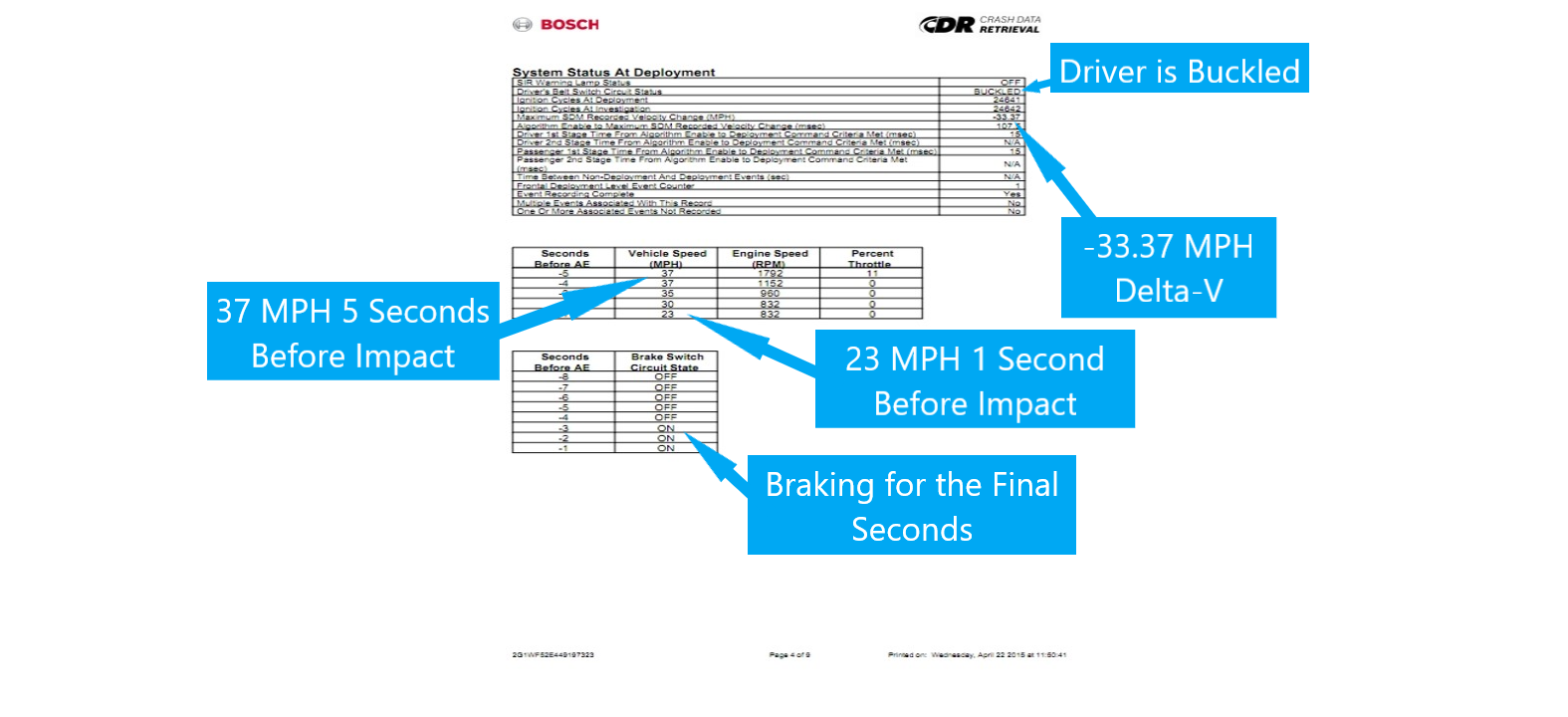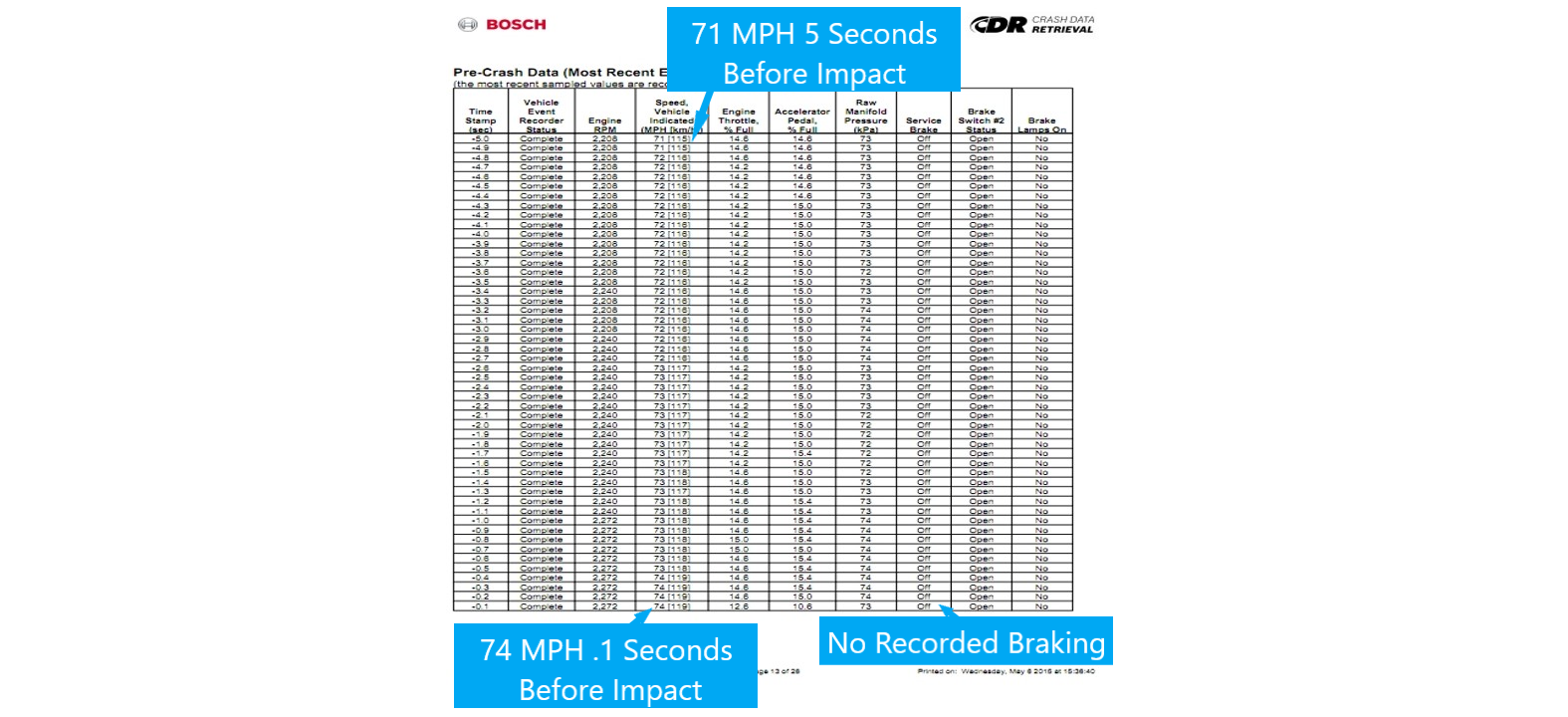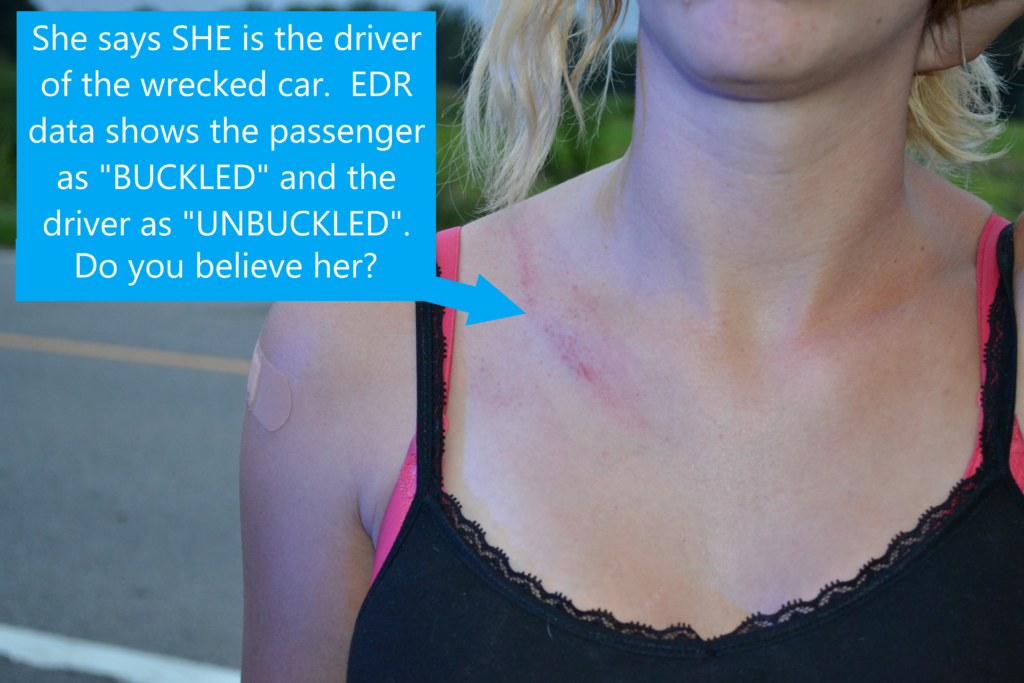In a previous blog post, we began to delve a little deeper into the vehicle aspect of the 9-Cell Collision Matrix by taking a look at tires. Let’s now take a closer look at the very diverse and interesting topic of Event Data Recorder (EDR) data.
So, what is an Event Data Recorder (EDR)? What is an Airbag Control Module (ACM)? Why so many acronyms? To make matters worse, each Original Equipment Manufacturer (OEM), there it goes again, has another name for the same thing. For example, General Motors calls theirs a Sensing Diagnostic Module (SDM), Ford calls theirs a Restraints Control Module (RCM) and a Powertrain Control Module (PCM). Toyota refers to it as an Electronic Control Unit (ECU)… I could go on, but I’ll spare you a few brain cells. To make things easier going forward, I will be referring to this mysterious device as an Event Data Recorder (EDR), but technically an EDR is only one aspect of the module itself… whew! Clear as mud? Put your thinking caps on ladies and gentlemen and let’s find out what it does and a little bit about how it works.
At this point you may be saying to yourself, is this guy talking about a car’s black box data? I’ve heard of this. Nope, they’re usually silver, but I know what you mean… although General Motors has been making the coverings black as of late and made of plastic of all things!
What does an EDR do? An EDR’s primary function is to, in the event of a collision, deploy the vehicle’s safety devices such as the airbags and seat belt pretensioners. To accomplish this task, the vehicle is equipped with a series of sensors located around the vehicle and connected by wiring called the Controller Area Network (CAN), which is a type of communication bus. The sensors then detect an algorithm threshold change of velocity that either meets the requirements for a Deployment Event or a Non-Deployment Event. As the name implies, a Deployment Event does indeed deploy the vehicle’s safety devices, including a variety of specifically placed airbags along with driver and passenger seatbelt pretensioner. A Non-Deployment Event initially meets the algorithm wake-up threshold but with a quickly lessening crash pulse (think striking a pothole), the Deployment Event threshold is never reached. In order for the system as a whole to determine if a criteria threshold has been met, it has to gauge things like vehicle speed, braking, and change of velocity (Delta-V) to name a few. Beginning in 2012, the federal government got involved in the EDR game with Title 49 CFR Part 563 which states that any vehicle equipped with an EDR must record certain Table I and Table II data and make that data retrievable. The good news, anyone who may find this data useful such as crash investigators, attorneys, or insurance adjusters now have a lot of cool information at the click of a button. The bad news, it’s way past 1984 and Mr. Orwell was right, big brother is watching!
But how do we click that button? Well, for the most part a company called Bosch has almost all OEM’s wrapped up in a neat little package by providing both hardware and software to download or image the EDR data known as Crash Data Retrieval (CDR). A few companies have decided to forgo Bosch and provide their own proprietary hardware and software (for a nominal fee) such as Kia / Hyundai. Typically, EDR imaging takes place in one of three ways, by either connecting to the vehicles Data Link Connector (DLC) through the OBD II port, direct to the module with the module removed from the vehicle, referred to as a bench top download, or by connecting directly to the module still attached in the vehicle. DLC imaging is always the preferred method for a variety of reasons.
Now that we’ve clicked the button, what do we get for our efforts? Generally speaking, we get 5 seconds of pre-crash data at a 1 second resolution rate like vehicle speed, braking, engine throttle percentage, engine RPM, and accelerator pedal percentage. Other data that we get are things like the maximum velocity change or the Delta-V both on the longitudinal and lateral axis, driver and passenger seatbelt usage, and whether a particular seat is occupied or not. As advancements are made in the world of EDR, and that’s happening fast, we as collision reconstructionist are getting ever more real time data. One really cool example of this is GM’s Front Camera Module (FCM) data. Using the front facing camera, which conducts braking mitigation for the vehicle, engineers at GM have incorporated a function in which the camera captures and records three freeze frame snapshots 4 seconds before impact, at impact, and 4 seconds after impact with a qualifying event.
Now armed with our newfound knowledge, lets take a look at a real wreck and see if we can prove or disprove a few things with the Vehicle #1 and Vehicle #2 data listed below. The wreck takes place on a north-south, two-lane asphalt roadway with a double yellow line. As you begin your investigation, a witness approaches you and says that Vehicle #1 passed them at a high rate of speed while traveling north. The witness further states that while passing, Vehicle #1 struck Vehicle #2 head-on in the southbound lane. The witness advises that they were traveling around the speed limit of 55 miles an hour when Vehicle #1 started to pass. What say you? As you read this, jot down your thoughts and we’ll revisit this together in my next blog.
P.S. You find out during your investigation, two weeks after the wreck, that the witness and the driver of Vehicle #2 went to high school together.
In the next blog we will take a stroll by the ol’ looking glass and gaze upon the incredible me, the human! Nothing could go wrong here… right?
Mark Turner, ACTAR #2368, is a vehicle collision reconstructionist with Warren. Prior to joining Warren, he worked for 25 years as a South Carolina Highway Patrol Trooper including 10 years as a Multi-Disciplinary Accident Investigation Team (M.A.I.T.) leader (corporal). Mark is accredited as a Traffic Accident Reconstructionist by The Accreditation Commission for Traffic Accident Reconstruction (ACTAR). He investigated in excess of 900 vehicle accidents and incidents as a trooper. Then, as a member of M.A.I.T. for 10 years, he was involved in over 1000 detailed investigations and collision reconstructions. Mark has testified multiple times in state courts and has been court qualified as an expert in accident investigation and collision reconstruction. Mark is a member of the South Carolina Association of Reconstruction Specialists (SCARS), the International Association of Accident Reconstruction Specialists (IAARS), and the National Association of Professional Accident Reconstructionist (NAPARS). He completed the Law Enforcement Basic Program at the South Carolina Criminal Justice Academy in Columbia, South Carolina.



